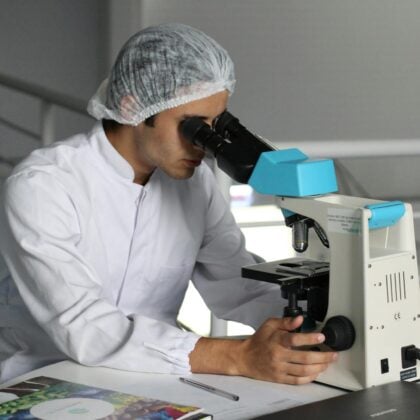
Today in France, lactose intolerance affects between 10% of the French population and almost 75% of the world's population. The individuals concerned then suffer a number of particularly unpleasant digestive problems: flatulence, gurgling, bloating, cramps, abdominal pain and diarrhoea. But what can you do if you think you are lactose intolerant?
What is lactose intolerance?
To begin with, Be careful not to confuse lactose intolerance with milk allergy. Lactose intolerance affects around 2 % of the population and can be life-threatening. It is generally detected very early, before the age of one, whereas lactose intolerance can occur at any stage of life.
Lactose intolerance is a digestive disorder caused by insufficient production of lactase, an enzyme that enables lactose to be digested. Adults are often affected by this intolerance, as lactase becomes rarer with age. It can also follow illnesses that weaken the digestive system.
How is lactose intolerance diagnosed?
Although it is a common ailment, lactose intolerance can sometimes be tricky to identify, as its signs are similar to those of other conditions: irritable bowel syndrome, Crohn's disease, gluten intolerance, etc. Only a specialist, in this case a gastroenterologist, can make a precise diagnosis. Only a specialist, in this case a gastroenterologist, can make a precise diagnosis.
The doctor will generally begin by prescribing the elimination of lactose from the diet for 3 to 4 weeks to see if the digestive problems persist. Depending on the case, the gastroenterologist may carry out an additional examination: Breath test (BHT). It measures the amount of hydrogen in the air exhaled before and after lactose ingestion. Intestinal bacteria produce a greater quantity of hydrogen during the digestion of unabsorbed lactose, thus revealing intolerance.
How can lactose intolerance be treated?
Lactose intolerance is not a serious condition, even if its digestive problems are a nuisance on a daily basis. These are easy to reduce, as long as you limit your lactose intake. It is therefore important to identify precisely which foods contain lactose, starting with dairy products. This carbohydrate, made up of glucose and galactose, is found in varying quantities in whole or skimmed milk, milk powder, yoghurts, cream, fromage frais, butter and certain types of cheese.
Lactose is also a food additive used in a variety of preparations, including canned, tinned and frozen foods, ready meals, bread, cold meats, cereals, salad dressings, coffee and biscuits. It is also combined with the active ingredients of nearly 20 % of medicines on the market, to mask their unpleasant taste and optimise their absorption.
Don't always have a choice about what goes on your plate? Dinner at a friend's house, going out to a restaurant, or just treating yourself : think about lactase-based food supplements. Discover also LACTOLERANCE 1/DAYThis innovative solution offers a full day's protection so you can enjoy the food you like, without the hassle.

Hello, I'm Vincent
Like you, I'm lactose intolerantI know exactly what you're going through and the difficulties you encounter on a daily basis. For over 10 years, I've been helping our customers to use our dietary supplements and giving advice and tips on how to improve their digestive comfort. I'm also a keen cook and gourmet, so you'll find my favourite recipes for a lactose-free diet in this blog.
Lactose intolerance is not inevitable! With LACTOLERANCE you can digest with complete peace of mind






